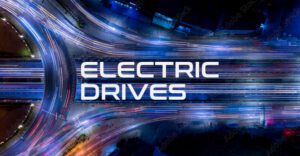Despite a challenging automotive market, demand for electric vehicles is booming. The UK’s battery electric car and van population more than doubled, to 467,430 vehicles, between December 2020 and March 2022, while new cars are now more likely to run on electricity than diesel. That transition into the mainstream is positive but it introduces a demanding new customer base.
As part of World EV Day, companies from across the electric vehicle (EV) industry worked with research agency Ipsos to identify the sticking points drivers face when they consider an EV. Results from the focus group discussions and online survey are encouraging; 64% of drivers are considering an electric car or van. However, with over half (53%) finding the buying process confusing, there is clearly room for improvement.
Drivers’ demands were similar for electric and combustion engine vehicles and, perhaps unsurprisingly during a cost-of-living crisis, motoring expenses are the most common influence when choosing a car or van. Discussions showed an awareness that buying, leasing or subscribing to an EV costs more but that this is balanced by lower in-life costs, so it isn’t necessarily a barrier.
The industry, however, needs to highlight where those savings arise. Less than half of surveyed drivers were aware of the sizeable tax incentives (47%) and cheaper ‘fuel’ (45%), while 35% don’t know how servicing and maintenance costs compare to petrol or diesel vehicles. The responses also reflect widespread concerns about battery durability, with only 32% agreeing that the packs will last and 38% worried that the replacement costs would be unaffordable.
Technology is helping. Two-thirds (65%) of drivers agree that range is improving, while 44% are confident that an EV could cover most of their journeys on a single charge, and it’s still an influential feature. Most cited convenient refuelling (91%) and range (90%) as important criteria but almost half (46%) said it is hard to understand manufacturers’ published range information. Interestingly, that share is higher among those who had researched EVs in detail (58%) or are already driving one (59%).

Closing those knowledge gaps is vital. Half (50%) of all drivers expected to get less than the advertised range while 56% said this would put them off choosing an EV, and this is exacerbated by perceptions of the charging network. Only 55% of drivers believe there are enough chargepoints on motorways, compared to 53% in urban and 42% in remote areas. It’s notable that EV drivers were significantly more confident about the coverage, condition and availability of chargepoints, showing those concerns disappear with experience.
Overall, it’s encouraging to see EVs move beyond the early adopter stage and become a mainstream alternative to petrol or diesel vehicles. However, that next generation of EV drivers expects the reassurance of clear and consistent running cost comparisons, and charging opportunities that are as easy to find, access and pay for as filling with liquid fuel. Laying those foundations today can only benefit this already booming market.



